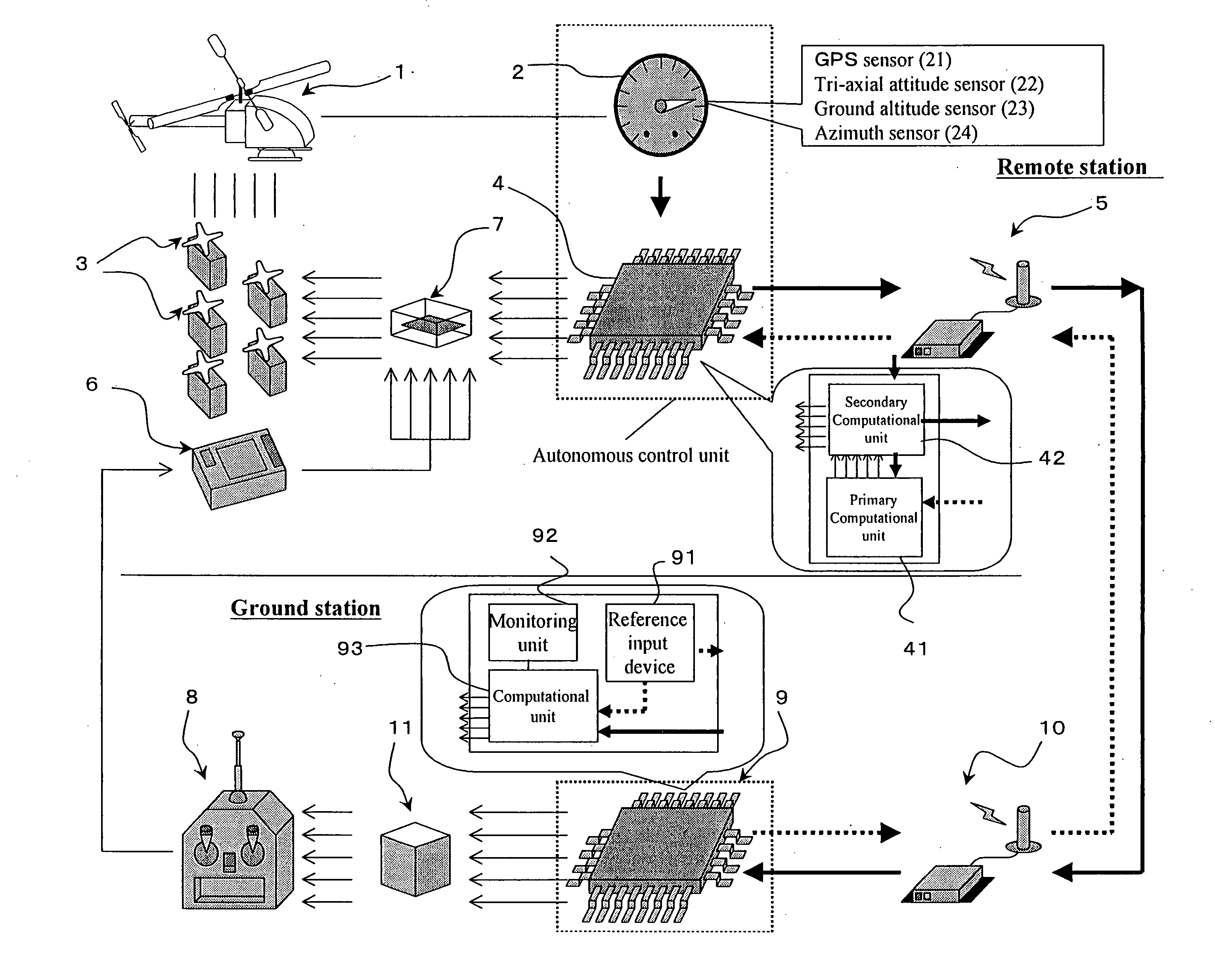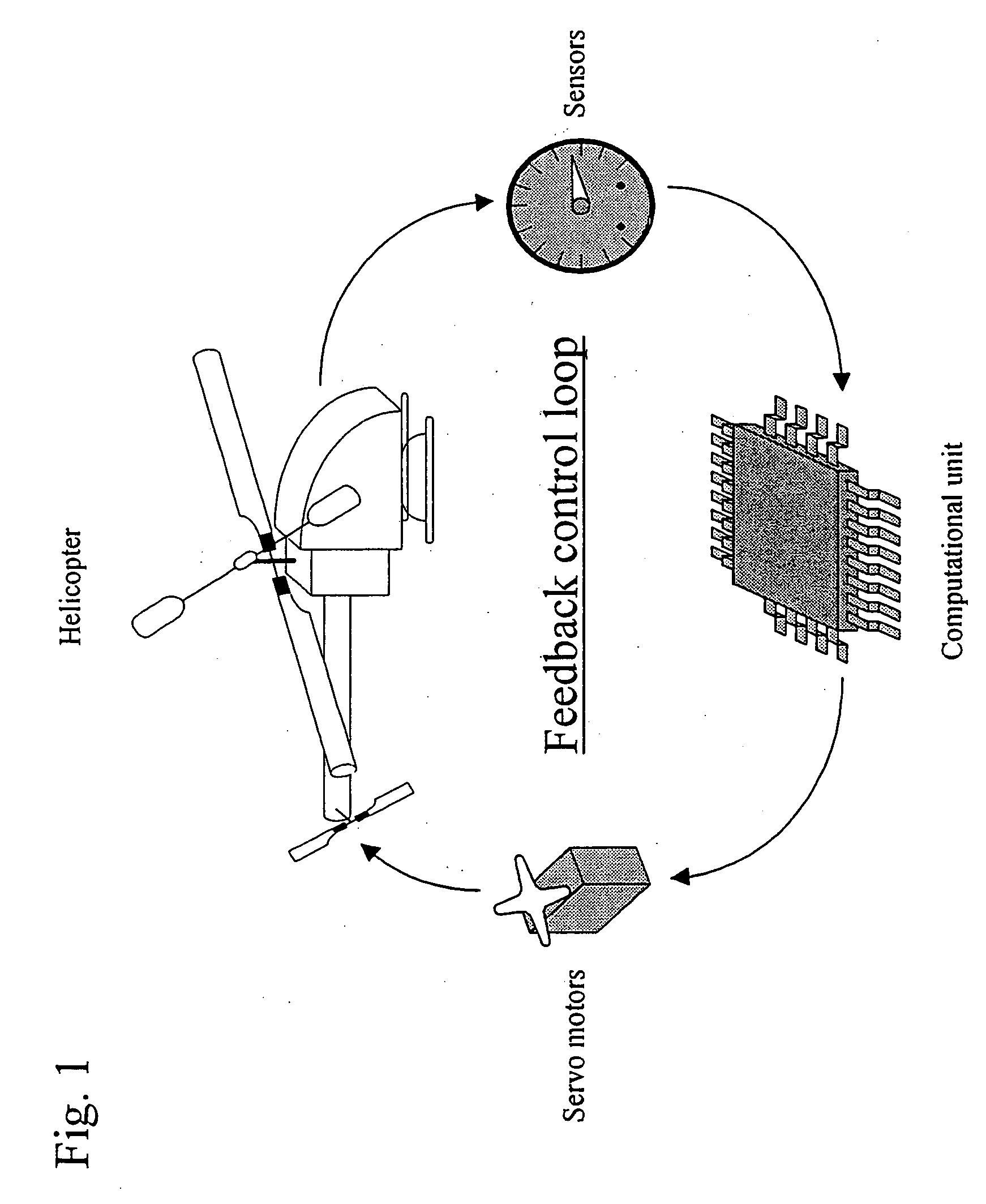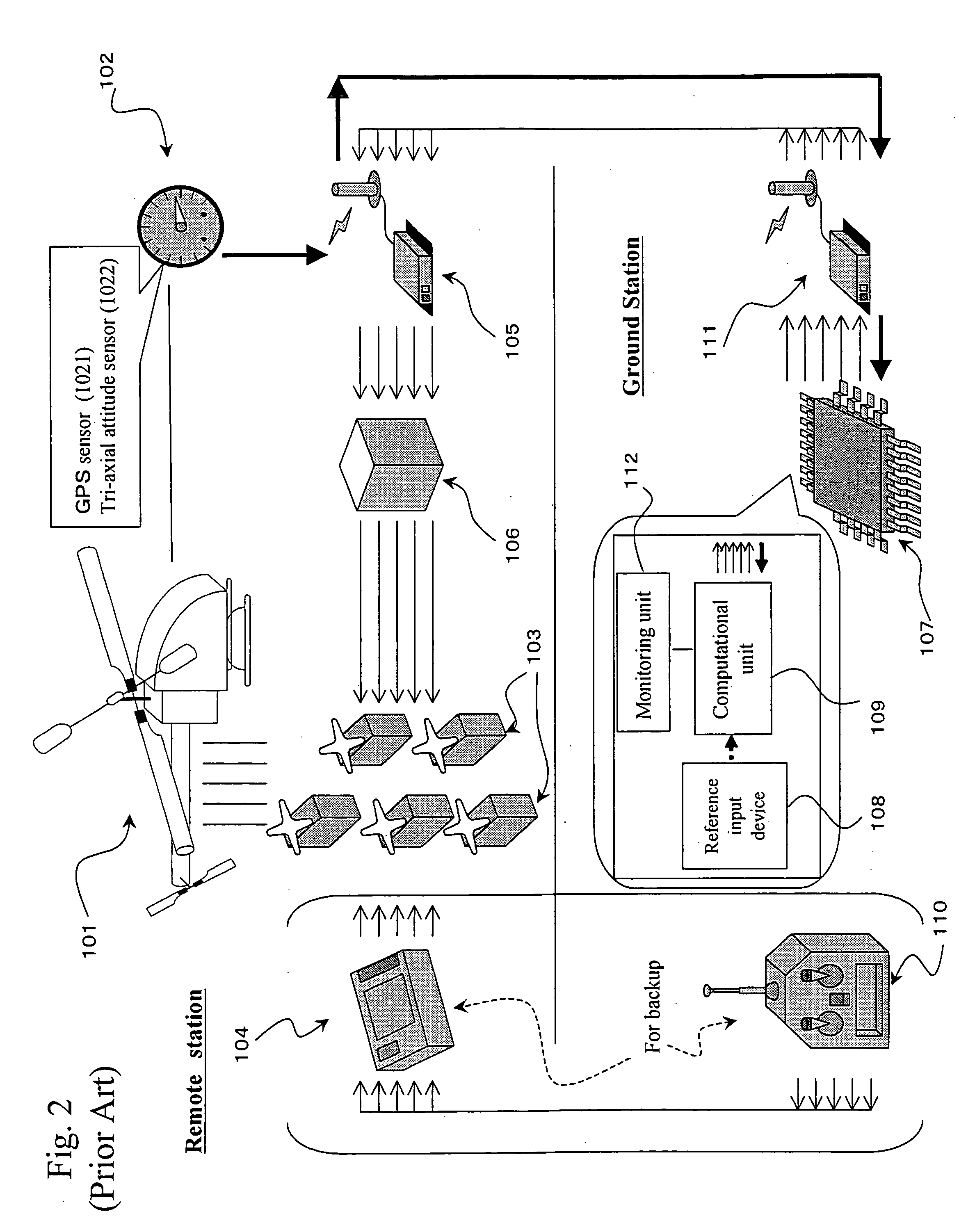Autonomous control method for small unmanned helicopter
a technology of unmanned helicopters and autonomous control systems, which is applied in adaptive control, remote control toys, instruments, etc., can solve the problems of limiting the range over which the helicopter can be deployed, the helicopter cannot be easily carried, and the helicopter cannot be adequately flung, so as to achieve the effect of easy portability and broadening the application of such helicopters
- Summary
- Abstract
- Description
- Claims
- Application Information
AI Technical Summary
Benefits of technology
Problems solved by technology
Method used
Image
Examples
Embodiment Construction
[0074] The inventor of the present invention has consistently pursued autonomous control research from the design of the requisite hardware through the development of autonomous control algorithms. The inventor developed the aforementioned autonomous control system, the aforementioned radio-controlled pulse generator, the hardware for the aforementioned servo pulse mixing / switching unit, and the software on a novel and independent basis. In addition, the inventor conducted flight experiments for the characterization of the aforementioned mathematical models, derived mathematical models from the experimental results, and developed autonomous control algorithms for the small unmanned helicopter using the mathematical models. By using the autonomous control system, the inventor successfully achieved the complete autonomous control of a small helicopter body, with an unloaded weight of approximately 9 kg, according to target values.
[0075] In what follows, we provide a logical explanati...
PUM
 Login to View More
Login to View More Abstract
Description
Claims
Application Information
 Login to View More
Login to View More - R&D
- Intellectual Property
- Life Sciences
- Materials
- Tech Scout
- Unparalleled Data Quality
- Higher Quality Content
- 60% Fewer Hallucinations
Browse by: Latest US Patents, China's latest patents, Technical Efficacy Thesaurus, Application Domain, Technology Topic, Popular Technical Reports.
© 2025 PatSnap. All rights reserved.Legal|Privacy policy|Modern Slavery Act Transparency Statement|Sitemap|About US| Contact US: help@patsnap.com



